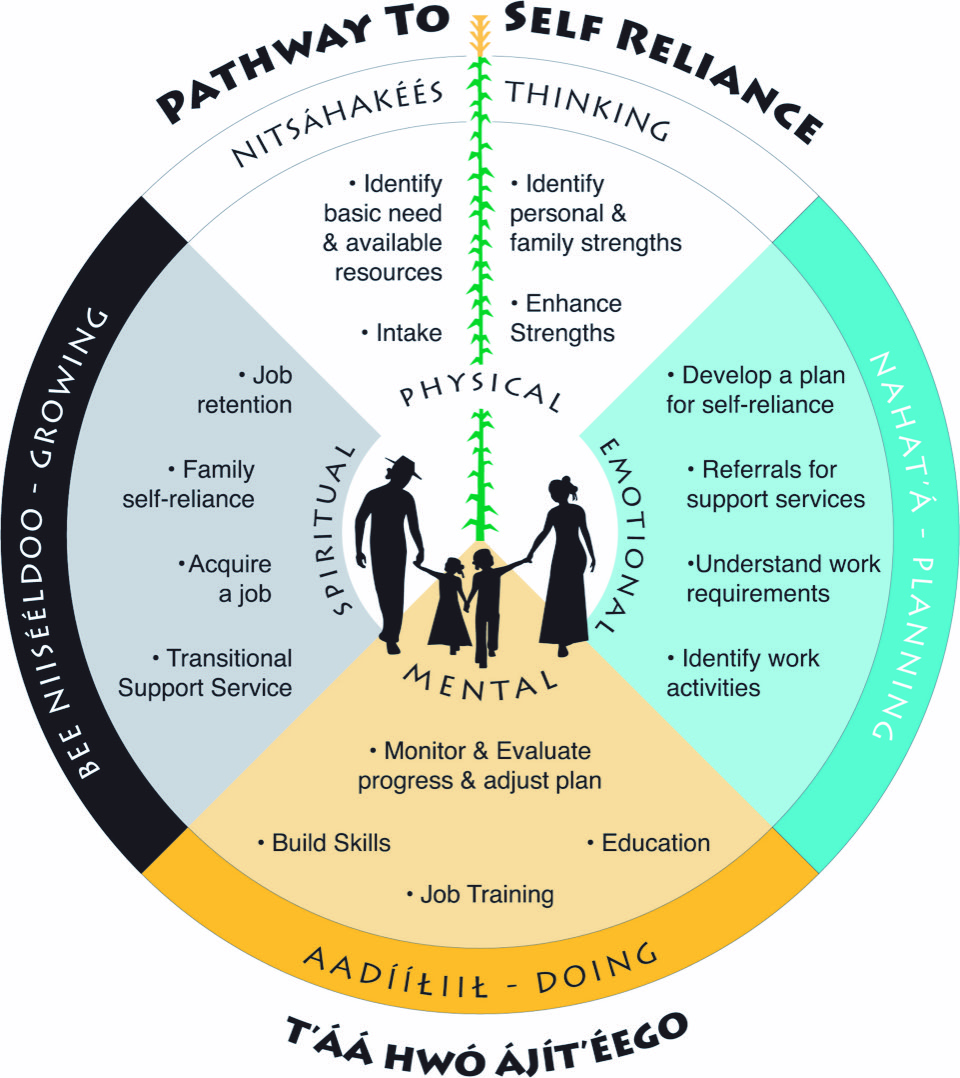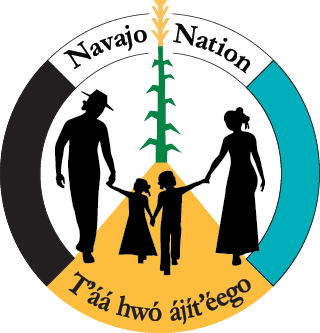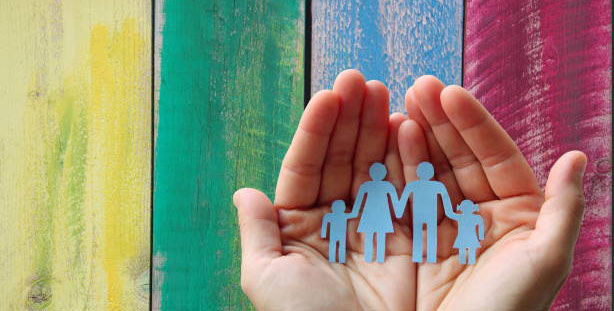History of the DSR
History, background, and how the Navajo Nation’s Department of Self Reliance came to be.
Changes to the Welfare System
In the early 1990’s, Congress saw that the Welfare System was not working as the number of individuals receiving welfare was growing, the number of out-of-wedlock pregnancies and births was increasing and a large percentage of absent parents were not providing Child Support. As a result, Congress passed Public Law 104-193, the Personal Responsibility and Work Opportunity Reconciliation Act (PRWORA), also known as the Welfare Reform Act.
PRWORA, which was signed into law by President Bill Clinton on August 22, 1996, ended the former Aid to Families with Dependent Children (AFDC) and replaced it with Temporary Assistance for Needy Families (TANF). In addition, it provided federally recognized tribes with the opportunity to apply for and operate their own TANF program.
Congress’ expectations for welfare reform are as follows:
- Welfare programs, such as TANF, should be designed to help move people from welfare to work.
- Welfare should be provided to families for only a short time, while adults gain the skills, knowledge, and experience to take care of their families.
- Parents should have child care and health care services for their children while they prepare for employment.
- Child support programs should be tougher and more successful in getting support from absent parents.
- States, Tribes, and local communities should be allowed to develop their own solutions for helping the families they serve to become self-reliant.
The four purposes of TANF are:
- Provide assistance to needy families so children may live at home or with relatives.
- End dependence of needy parents on Government benefits by promoting job preparation, work, and marriage.
- Prevent and reduce out-of-wedlock pregnancies.
- Encourage the formation, maintenance and strengthening of two-parent families.
The History of DSR
In December 1996, the Navajo Nation began the process of planning, developing and implementing of its own TANF program. The diversity of the population, large land base, remoteness, and limited economic and employment opportunities proved challenging in developing the TANF program.
In July 1999, the Navajo Nation submitted its first Tribal Family Assistance Plan (TFAP), which describes how the DSR plans to operate its Tribal TANF program, including eligibility criteria, service area and types of assistance and services to be provided. DSR must develop and submit a TFAP to the U.S. Department of Health and Human Services, Administration for Children and Families, every three years.
In March 2002, the Navajo Nation TANF program officially opened its doors and began offering services independent from the states of Arizona, New Mexico and Utah.
In January 2007, the Navajo Nation TANF Program changed its name to the Navajo Nation Program for Self Reliance to advance the values of the program.
In January 2014, the program established itself as a department and was renamed, the Department for Self Reliance.
Pathway to Self Reliance Service Delivery Model
Throughout the years, the Navajo people have faced many adversities; our elders were able to overcome and survive because they were taught and believed in the basic values and principles of Iiná (life). The teachings of Iiná, prescribe that if you want to become self-reliant, you must be willing to do the work necessary and not expect others to do it for you.
The Pathway to Self Reliance Service Delivery Model has four important life activities. These four (4) cultural components provide guidance and serve as a model for the development of well-being and promote values in sustaining the Navajo livelihood of self-reliance and self-sufficiency in today’s world.
The Pathway to Self Reliance Service Delivery Model serves as guide for staff to prepare Customers for self-reliance. To apply the model, start at the top, beginning with Thinking and go clock-wise to Planning, Doing and end with Growing.
We shall serve, with Integrity and Ethics to Empower individuals and families by promoting T’áá hwó ájít’éego through appropriate support, opportunities and education.

Nitsáhakéés
Thinking
To promote personal responsibility by educating Customers on welfare reform while reducing dependency on public assistance by creating educational and career opportunities. By providing assistance for the Customer’s basic needs while addressing social problems that are hindering the Customer’s growth and by identifying and providing referrals to key resources.
Nahat’á
Planning
To create an atmosphere encouraging personal change by assisting the Customer to identify specific opportunities and to foster a positive outcome. The Customer will begin to recognize their own personal strengths which promotes the Customer’s well-being by encouraging a Customer-centered process that instills hope and optimism in the Customer’s capacity for change.
AADÍÍŁIIŁ
Doing
To implement a plan of action based on identified strengths and barriers while establishing and providing opportunities for customers to develop skills, enhance knowledge and gain experience will help them to become self-sufficient and self-reliant.
Bee Niisééldoo
Growing
To develop a plan of action that results in cultivation of long-range goals and achievements which will supports the Navajo concept of Iiná, self-reliance for the customer and her/his family.


